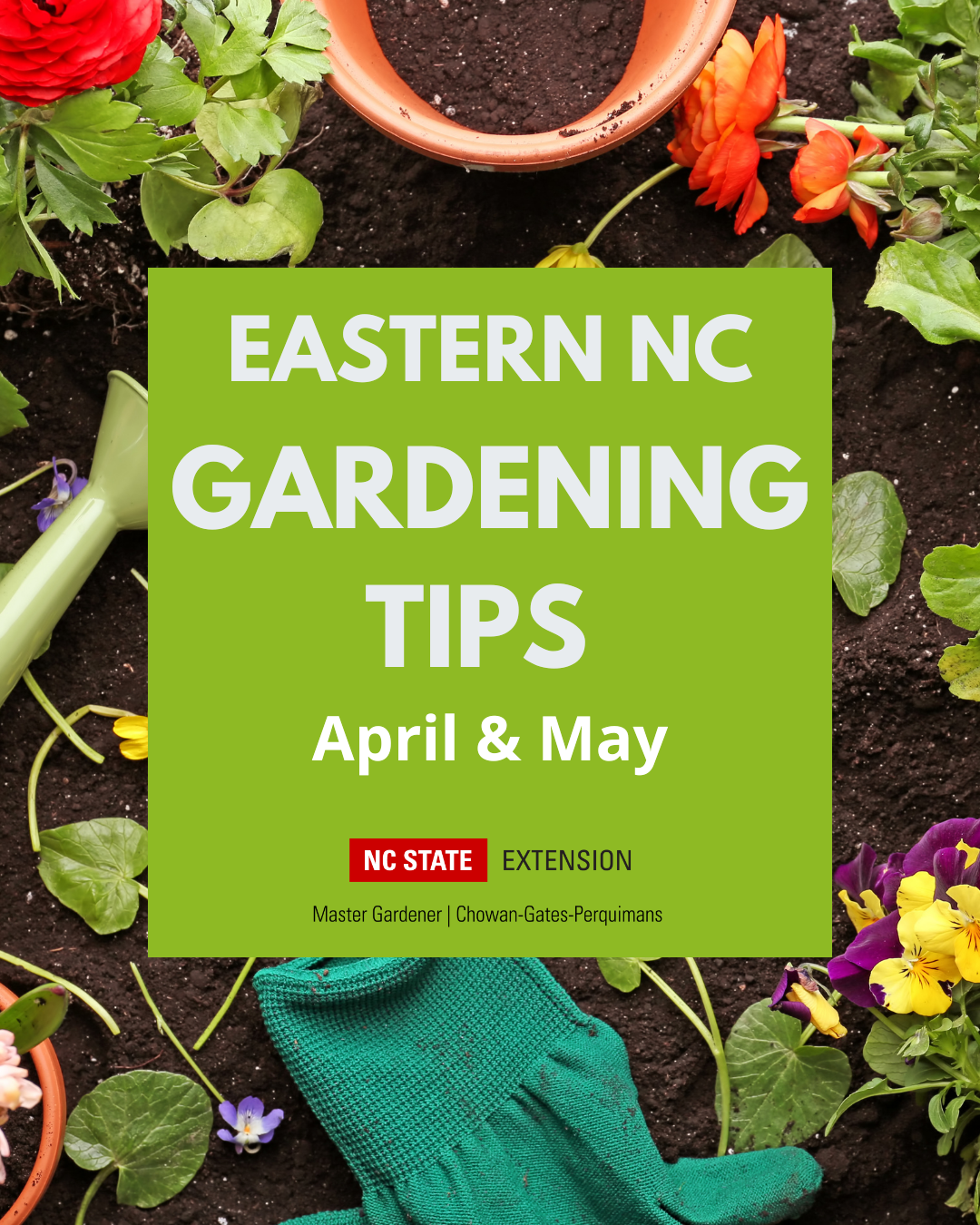April Showers & May Flowers: Gardening Tips for April and May in Eastern NC
go.ncsu.edu/readext?1066197
en Español / em Português
El inglés es el idioma de control de esta página. En la medida en que haya algún conflicto entre la traducción al inglés y la traducción, el inglés prevalece.
Al hacer clic en el enlace de traducción se activa un servicio de traducción gratuito para convertir la página al español. Al igual que con cualquier traducción por Internet, la conversión no es sensible al contexto y puede que no traduzca el texto en su significado original. NC State Extension no garantiza la exactitud del texto traducido. Por favor, tenga en cuenta que algunas aplicaciones y/o servicios pueden no funcionar como se espera cuando se traducen.
Português
Inglês é o idioma de controle desta página. Na medida que haja algum conflito entre o texto original em Inglês e a tradução, o Inglês prevalece.
Ao clicar no link de tradução, um serviço gratuito de tradução será ativado para converter a página para o Português. Como em qualquer tradução pela internet, a conversão não é sensivel ao contexto e pode não ocorrer a tradução para o significado orginal. O serviço de Extensão da Carolina do Norte (NC State Extension) não garante a exatidão do texto traduzido. Por favor, observe que algumas funções ou serviços podem não funcionar como esperado após a tradução.
English
English is the controlling language of this page. To the extent there is any conflict between the English text and the translation, English controls.
Clicking on the translation link activates a free translation service to convert the page to Spanish. As with any Internet translation, the conversion is not context-sensitive and may not translate the text to its original meaning. NC State Extension does not guarantee the accuracy of the translated text. Please note that some applications and/or services may not function as expected when translated.
Collapse ▲
Spring is finally here! Take a minute to check out this list of “to-dos” and considerations for your Eastern NC garden in April and May.
Written by Extension Master Gardener Volunteer Annette Thompson
- Container gardening is a good way to add color to the patio. For additional
information, see this link.
https://www.ncarboretum.org/2023/08/14/container-garden-basics-from-a-
plant-lady/ - As spring and summer approach, many people are interested in native
plants and attracting wildlife like bees, butterflies and birds. The NC Native
Plant Society North Carolina Native Plant Society has good resources
as well as the NCSU Plant Toolbox https://plants.ces.ncsu.edu/ . - After azaleas and forsythia bloom, fertilize and prune if needed. Cut
wayward branches, crossing branches, dead or damaged branches and
any shoots that only have a cluster of leaves at the top. Remove the oldest,
thickest branches at ground level and thin enough to allow for good air flow. - Divide and share daylilies, liriope, and hosta as they emerge this spring
- Time to start perennials from seed for summer blooms
- After the last frost, usually in March or April, warm season vegetables can
be planted. The last frost date for zone 8 in eastern NC is April 1, but be sure to watch the weather closely. Anything less than 40 degrees Fahrenheit at night may warrant bringing inside or covering up (plastic buckets and old bed sheets work well for this.) - As spring flowering bulbs die back, avoid cutting the foliage until it has
yellowed. This helps the plant store energy for next year’s blooms. Stalks
on irises and daffodils can be cut back as blooms fade, but not the foliage - As April moves into May, it is a good time to start planting summer annuals.
- As cool season root vegetables emerge like beets and carrots, thin them
out, leaving room for 3 fingers between plants. Use sharp cutting scissors
to cut the plants off at soil level. - Transplant Easter lilies after the last frost. Lilies like their “feet” in the shade
and their tops in the sun. Leaves from the original shoot may be cut back
as they die. - Pinch back the shoot tips on annuals such as zinnias, marigolds, petunias,
cosmos and salvia to encourage bushier growth.



